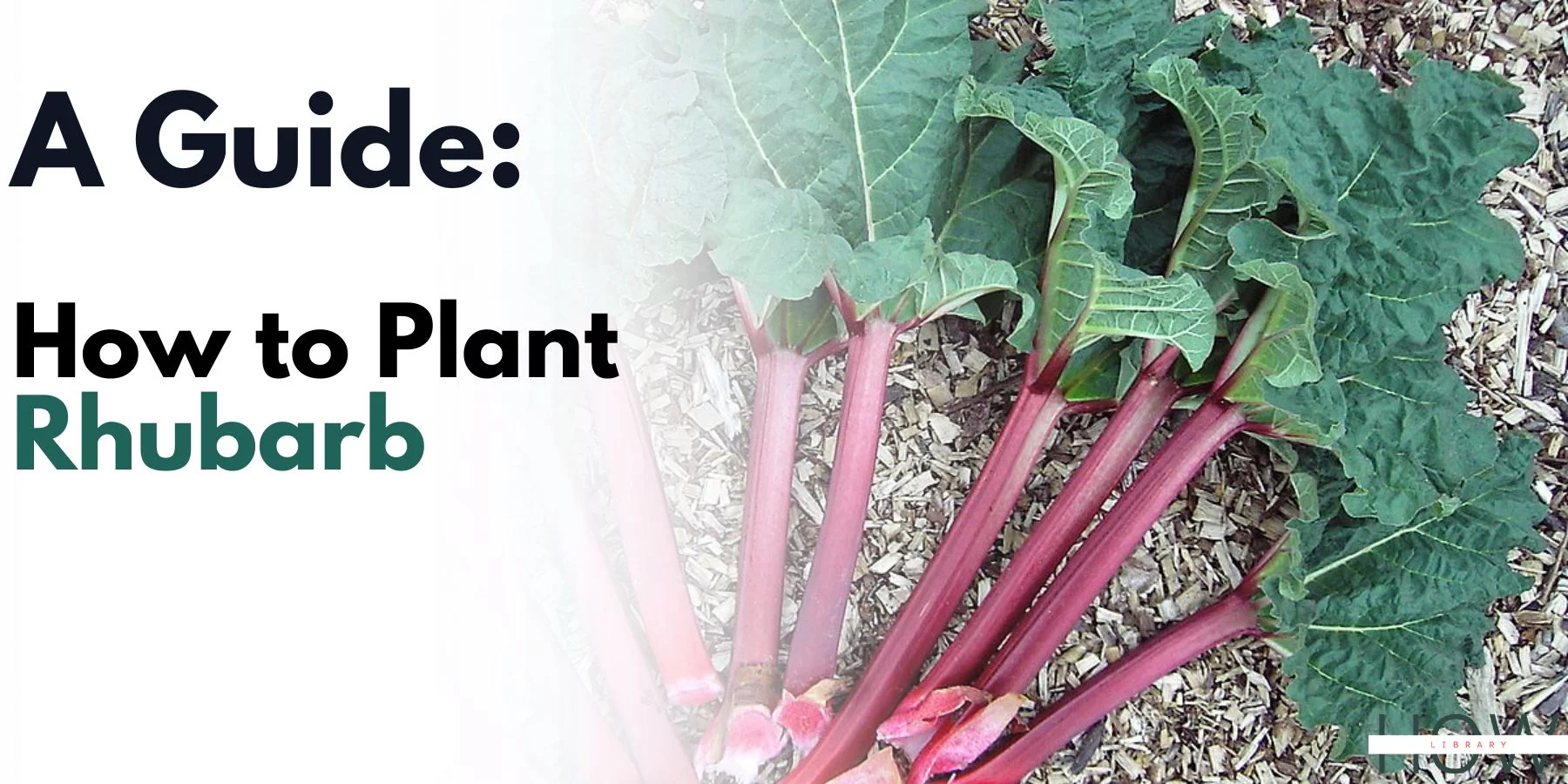Rhubarb is an attractive, easy to grow vegetable that will reliably produce up to ten years or more from a single planting. It is grown for its delicious celery-like stalks, which are cooked and often used more like a fruit than a vegetable.
Stalks of rhubarb varieties vary in flavor from sweet to quite tart, while their color varies from a pretty crimson red to cherry red. Stalks of some varieties are red on the outside, green on the inside; others are a deep red throughout. When you harvest rhubarb stalks, always remove the attached leaves, as they are poisonous and should never be eaten. Discard the leaves or add them to your compost pile.
Rhubarb is a long-lived perennial grown from divisions. Plant it in a sunny, out-of-the-way spot or even at the back of a colorful flower bed, where you will not damage it accidentally while preparing a site for your vegetable garden in spring.
Rhubarb can be successfully harvested in its second year, a few stalks at a time, and all subsequent years. The more stalks you harvest, the more the plant will yield. The 6 ft. tall, white flowers should be cut off before they open to help target the plant’s energy to its flavorful stalks.
How to Plant Rhubarb
Supplies Needed
Planting a Rhubarb
- In spring, dig a two-foot deep, 3 feet wide hole. Refill the hole to 2 inches from the top with 4 to 5-inch layers of soil, compost, and manure.
- Sprinkle 1 cup of bone meal over the site. Spread crown roots out in the hole. Fill with soil mixture, covering the crown with 1 to 2 inches of soil.
- Gently firm soil and water thoroughly. When leaves appear, mulch with compost to help keep moisture in the ground.
- Water whenever the soil begins to dry out. Feed in mid-summer and in early fall with a 1-inch layer of well-rotted manure.
- Cut flower stalks off as they appear. To harvest stalks, twist them off or cut them with a sharp knife.
- Be careful not to cut the crown.
- Never harvest more than four rhubarb stalks from established plants at a time. Harvesting any more weakens the plant.
Rhubarb is an attractive, easy-to-grow vegetable that will reliably produce up to ten years or more from a single planting. It is grown for its delicious celery-like stalks, which are cooked and often used more like a fruit than a vegetable.
When you plant rhubarb, permanently remove the attached leaves, as they are poisonous and should never be eaten. Discard the leaves or add them to your compost pile.
Rhubarb can be successfully harvested in its second year, a few stalks at a time, and all subsequent years. The more stalks you gather, the more the plant will yield. The six ft. tall, white flowers should be cut off before they open to help target the plant’s energy to its flavorful stalks.
Troubleshooting Tips
- If you are looking to purchase a rhubarb plant, be sure to look for a healthy specimen with big crowns and two to four large buds.
- The roots should be thick and fleshy, with no signs of rot.
- Avoid plants with broken, spindly, or shriveled roots, as well as those with soft or blackened areas indicating rot.
- Finally, check to ensure the plant is not overcrowded, as this can impede growth. If it is, consider transplanting it to a more spacious location.
[sc_fs_multi_faq headline-0=”h2″ question-0=”When to plant rhubarb plants?” answer-0=”The best time to plant rhubarb is in the spring, after all danger of frost has passed. Rhubarb plants can be started from seed, but it is generally easier to purchase young plants from a nursery. Be sure to select healthy specimens with thick, fleshy roots. Avoid any with signs of rot, such as blackened or soft areas. Also, look for plants that are not overcrowded. If they are, you may need to transplant them to a more spacious location. ” image-0=”” headline-1=”h2″ question-1=”How to grow rhubarb in containers?” answer-1=”If you are planting rhubarb in a container, choose a pot that is at least 18 inches wide and has drainage holes. Be sure to use a well-draining potting mix. Water rhubarb deeply and regularly, being careful not to overwater. Fertilize rhubarb plants every two weeks with a balanced fertilizer. ” image-1=”” headline-2=”h2″ question-2=”What should you not plant rhubarb near?” answer-2=”You should not plant rhubarb near potatoes, as they are susceptible to the same diseases. Also, avoid planting rhubarb in an area that has recently been occupied by other members of the brassica family, such as cabbage or broccoli. This is because they can also spread disease to rhubarb plants. Finally, do not plant rhubarb near beans or peas, as they can inhibit its growth. ” image-2=”” headline-3=”h2″ question-3=”How often to water rhubarb plants?” answer-3=”Rhubarb plants should be watered deeply and regularly, especially when they are first transplanted. Be careful not to overwater, as this can lead to root rot. Once established, rhubarb plants are relatively drought-tolerant and only need to be watered when the soil is dry. ” image-3=”” headline-4=”h2″ question-4=”How to fertilize rhubarb plants?” answer-4=”Fertilize rhubarb plants every two weeks with a balanced fertilizer. If you are growing rhubarb in containers, you may need to fertilize more often. leach rhubarb plants every year Rhubarb plants should be leached every year to remove any built-up salt from the soil. To do this, water the plant deeply and slowly so that the water has a chance to reach the roots. This will help prevent salt build-up, which can damage the plant. ” image-4=”” headline-5=”h2″ question-5=”Where to plant rhubarb sun or shade?” answer-5=”Rhubarb plants prefer full sun but will tolerate partial shade. They should be planted in an area that is protected from strong winds.” image-5=”” count=”6″ html=”true” css_class=””]

